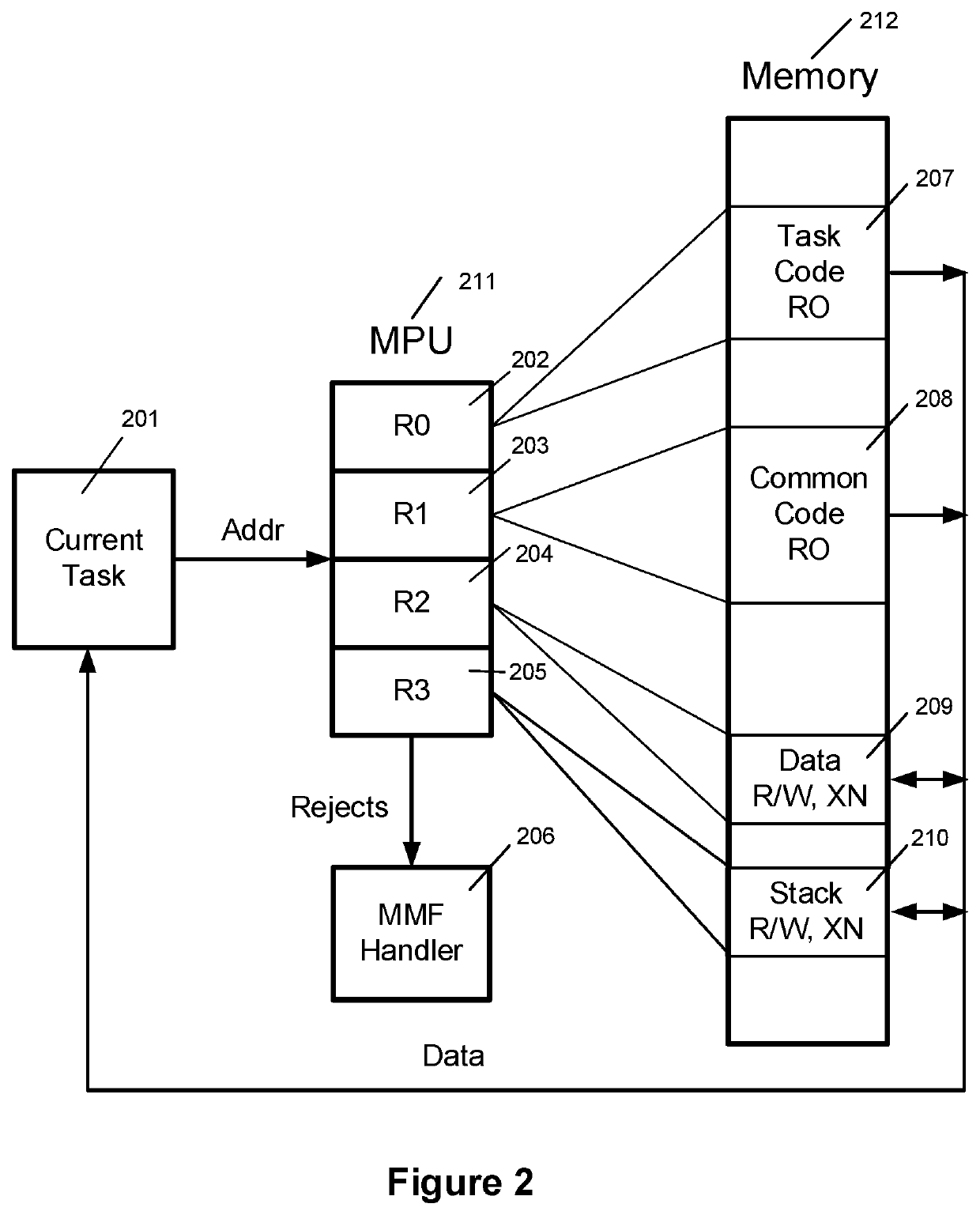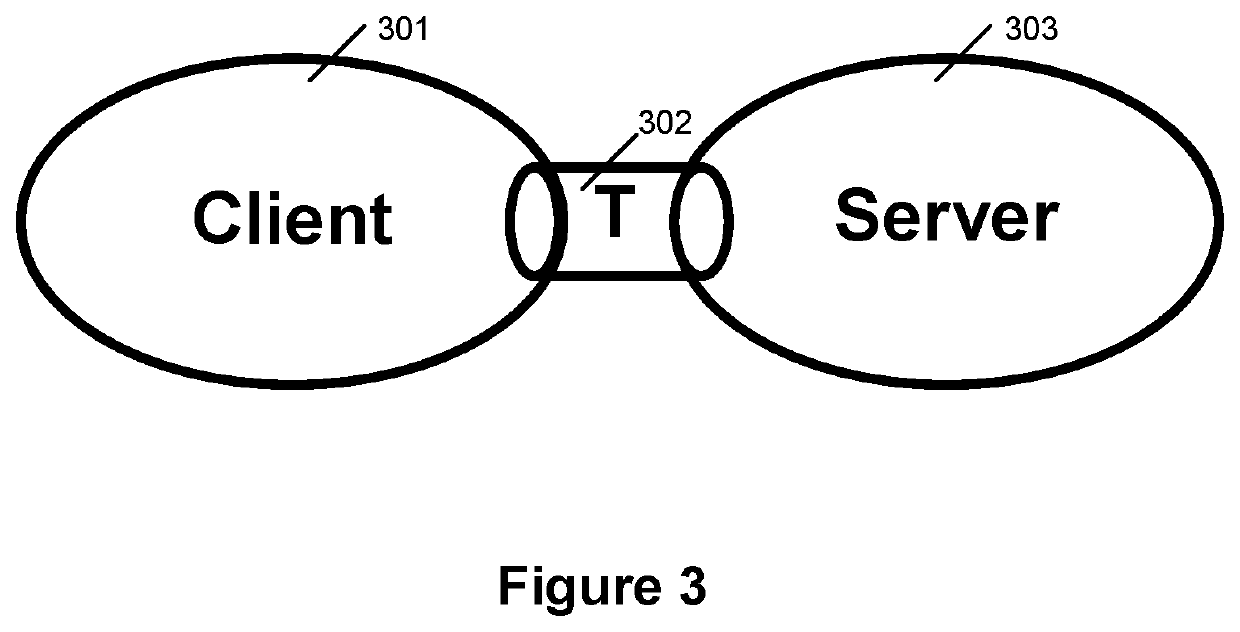Tunnel Portals Between Isolated Partitions
a tunnel portal and partition technology, applied in the field of tunnel portals between isolated partitions, can solve the problems of increasing the number of hacked and malware attacks, difficult use of mpu in this architecture, and difficult to achieve full partition isolation in these systems, so as to reduce the number of regions required, improve security, and minimize performance degradation
- Summary
- Abstract
- Description
- Claims
- Application Information
AI Technical Summary
Benefits of technology
Problems solved by technology
Method used
Image
Examples
Embodiment Construction
[0021]The following information describes a simple embodiment of the invention sufficient to explain how it works. The term “application” is understood to mean the software in an embedded device that performs the functions of that device. Figures land 2 illustrate the structure and operation of the preferred embodiment. They are for reference, and not part of the inventive material.
[0022]FIG. 1 shows the preferred embodiment of this invention consisting of processor 101 sending a memory address 102 to a Memory Protection Unit (MPU) 103. The MPU 103 compares the address 102 to its regions and passes the address on to the system address bus 105 if it is ok. Otherwise, MPU 103 sends a Memory Mange Fault (MMF) exception 106 back to processor 101 and no access to memory nor FO occurs.
[0023]If ok, address 102 is sent to Read / Write Memory 108, Read-Only Memory 109, and I / O Device 110 and any other memories or devices connected to address bus 105. Whichever of these devices recognizes the a...
PUM
 Login to View More
Login to View More Abstract
Description
Claims
Application Information
 Login to View More
Login to View More - R&D
- Intellectual Property
- Life Sciences
- Materials
- Tech Scout
- Unparalleled Data Quality
- Higher Quality Content
- 60% Fewer Hallucinations
Browse by: Latest US Patents, China's latest patents, Technical Efficacy Thesaurus, Application Domain, Technology Topic, Popular Technical Reports.
© 2025 PatSnap. All rights reserved.Legal|Privacy policy|Modern Slavery Act Transparency Statement|Sitemap|About US| Contact US: help@patsnap.com



